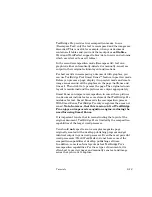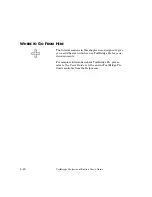
Tips and Techniques
6–13
For every document, you can specify one of three general types of
input layout for the input document to be processed. You can
also select one of four output layout modes for the output
document.
You can define a specific document quality and page
orientation as well.
Note
These four pop-up menus represent the most commonly used and
modified preferences in TextBridge Pro. Additional job prefer-
ences, including Recognition Language, Custom Dictionary, Zone
Template, and Training Data, as well as scanner preferences are
also available on the Main window by dragging the preferences
view bar to reveal the next two rows of pop-up menus. These pref-
erences are also available from the Recognize and Scanner
menus, as appropriate.
Input layout
The Input layout setting controls how much analysis of the page
image layout TextBridge Pro is to perform.
◆
The Text: One column setting is appropriate for simple
documents such as text-only manuscripts, letters, memos and
tabular data. It also requires the least amount of processing time.
◆
The Text and pictures: One column setting instructs
TextBridge Pro to find and exclude from OCR any halftones in the
document. For each page, TextBridge Pro runs region analysis,
locating text columns, cell tables, and halftones. In this case,
however, it discards any regions it finds except for halftones. All
other region types (text columns, cell tables) are processed as
straight text.
◆
The default setting, Automatic, also instructs TextBridge Pro to
run region analysis. All region types are processed as such. If
your document contains any of these elements, this is the correct
setting, especially if you want to run one of the document
recomposition settings.
















































